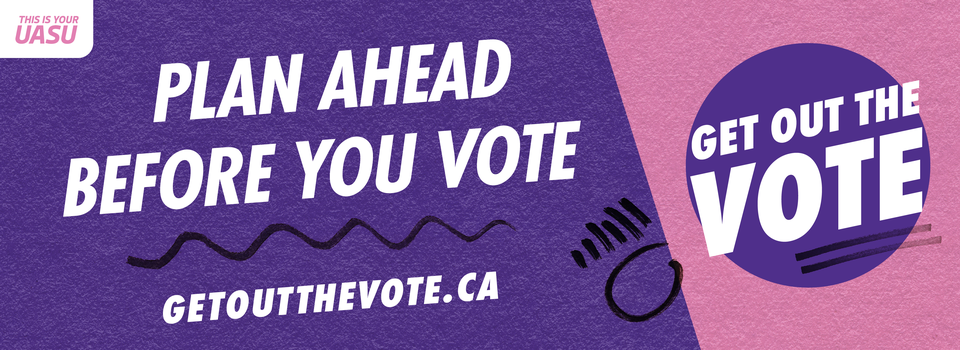There is a federal election going on in Canada right now, and we are here to help you make your plan to vote. Voting is fairly straightforward, but to make it as quick and easy as possible, it’s best to make a plan. Here are some steps to cast your ballot.
1. Check if you’re registered to vote!
Registering is easy, and if you have ever voted before, you may already be registered! Use the Elections Canada Online Voter Registration tool to:
- Check if you are registered
- Register, if you have never been registered before
- Update your registration, such as address if you have moved since the last time you voted.
2. Know where to go.
It’s easy to find out what your electoral district is, and who is running in it, by using the Elections Canada Voter Information Service. You’ll be able to look up ridings by postal code, address, title, and more!
The easiest way to find your riding is to know your home address. This is important especially if you are currently living away from home to attend classes!
You will be assigned a specific polling place to vote at Advance Polls (April 18-21), or on Election Day (April 28). These polling places are not always the same place, so double check where you need to go depending on the day that works best for you!
3. Get your stuff together.
Things you’ll need to take with you when you go to vote:
- Option 1: Your driver’s license, passport, or other piece of identification that has your photo, name, and address on it, OR
- Option 2: Your Voter Information Card (which you should receive in the mail if you are registered to vote in advance) AND a piece identification with your name and address on it.
You can also vote if you don’t have ID, by having another elector (voter) vouch for your identity.
4. Fill out your ballot!
*If you’re voting by special ballot, such as at a Vote on Campus station, in an Elections Canada office, or by mail, write the name of your chosen candidate clearly.
*If you’re voting on election day, mark your ballot as instructed on the ballot.
Your ballot will display the names of the candidates in your riding, and their party affiliations if they have one.
You can also spoil your ballot. This is similar to voting for “none of the above” on your UASU elections ballot. A ballot is considered to be spoiled when the intended choice of the voter is unclear, or marked with anything that identifies the voter (such as initials, or your own name).
Rejected or spoiled ballots arguably don’t do much in the grand scheme of an election (unless a lot of people do it). But it’s still better to lodge a spoiled vote than no vote at all! It’s a good way to stay politically engaged, because studies show that “the best predictor of whether someone votes in an election is whether they voted in the previous election.” So make it a habit to participate in politics in this small way!
5. Cast your vote—and celebrate!
Whether you choose to spoil your ballot, or very clearly mark down the candidate you are voting for, it’s worth celebrating after you vote. Exercising your right to help decide who represents you in government definitely deserves a lil treat. Get a fancy coffee, a scoop of your favourite ice cream, or takeout from your local spot. You deserve it.


